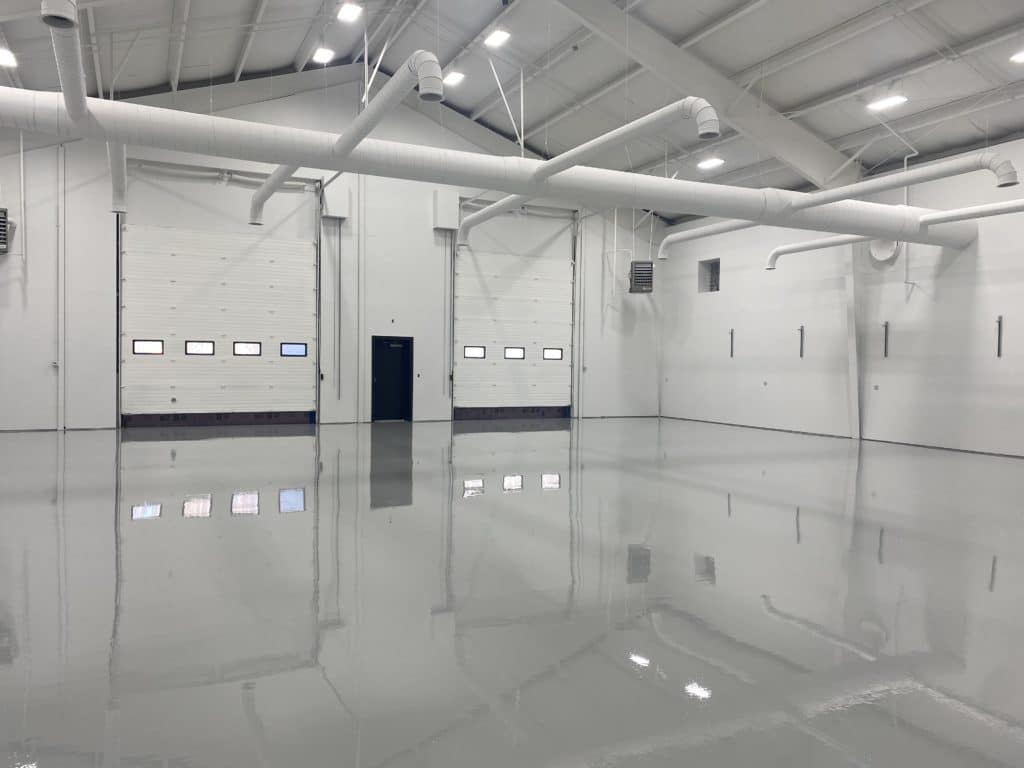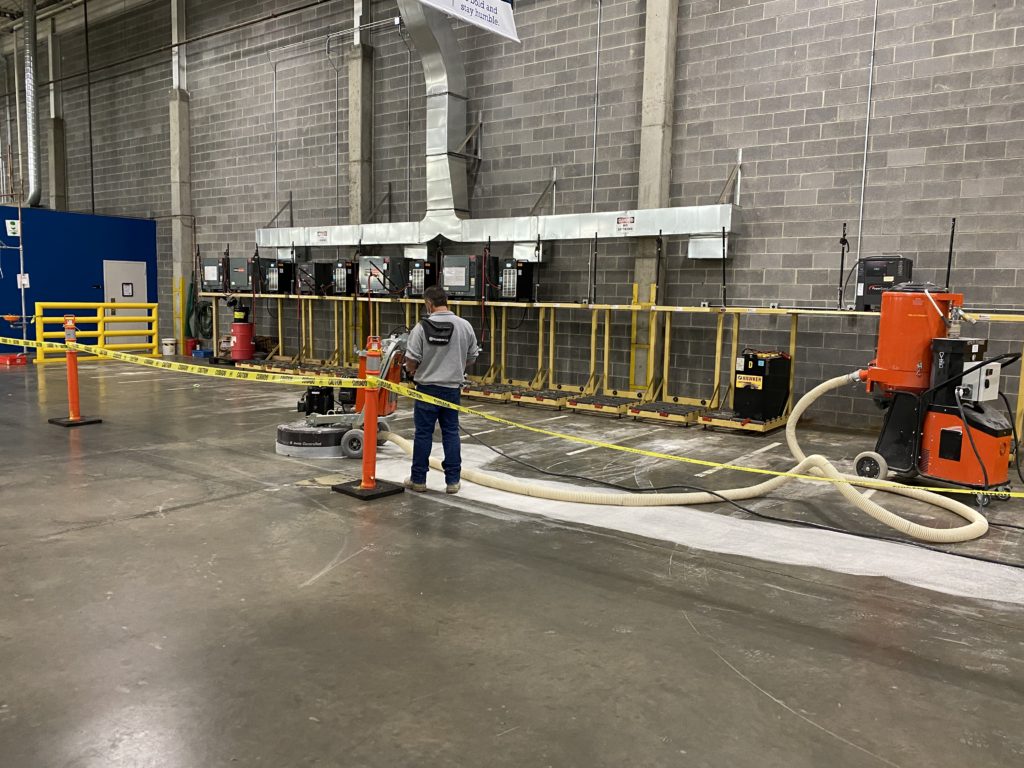How to Seal a Dusty Concrete Floor
Are you grappling with the continual issue of dusty concrete floors? Dusty floors not only tarnish the aesthetics of your industrial or commercial space, but they can also endanger the health and safety of those working within it.
At McLean Company, we have the perfect solution to this common problem – sealing your concrete floors. This simple yet effective strategy can transform your space, providing an improved look and a safer environment. We’ll guide you through how to seal a dusty concrete floor, ensuring you benefit from a clean, dust-free environment. Keep reading to find out more!

Why Seal a Dusty Floor?
Before we dive into the ‘how,’ let’s discuss the ‘why.’ Why should you bother to seal a dusty floor in the first place? Here are a few reasons:
- Health and Safety: Dust on your floors can lead to respiratory issues for those working in the space. By sealing the dust, you reduce the risks of inhaling harmful particles.
- Durability: Dusty floors can also damage the concrete surface, making it more prone to cracks and other forms of wear and tear. Sealing your floor protects it from damage and increases its lifespan.
- Cleanliness: Admittedly, floors covered in dust are far from visually appealing. By sealing them, you not only improve the overall appearance of your space but also make it easier to clean and maintain.
- Equipment Protection: Dusty floors can damage machinery and equipment, leading to costly repairs or replacements. Sealing your floor helps to prevent dust from accumulating and causing damage to your equipment.
- Cost-Effective: Over time, the costs of frequent cleaning, equipment repair, and floor replacement can add up. A sealed floor is a cost-effective solution that reduces maintenance expenses and prolongs the life of your equipment, offering significant savings in the long run.
How to Seal a Dusty Floor
Now that you understand the importance of sealing your dusty floor, let’s discuss how. Below are the steps on how to seal a dusty floor:
- Prep With A Vacuum and Broom: Before sealing your floor, it’s essential to ensure it’s free of debris or loose particles. Use a vacuum cleaner to remove all the dust and dirt from the surface. Follow this up with a broom to reach any corners or tight spots.
- Ensure Object Removal: Ensure all objects are removed from the room or adequately covered to prevent debris from falling on the floor during sealing. If your space has any protruding objects or fixtures, cover them with plastic or tape to protect them from the sealant.
- Wash Away Grime: Next, use a heavy-duty degreaser to clean any stains or grime the vacuum and broom may have missed. This step is crucial as sealant may not adhere well to greasy or oily surfaces. Ensure that the floor is completely dry before proceeding to the next step.
- Sand For Smoothness: If your concrete floor has rough or uneven areas, lightly sand them using a pole sander. This step helps smooth the surface and ensures the sealant is applied evenly. Once you have completed the initial sanding, make sure to remove any dust or debris from the surface of the concrete.
- Apply Primer For Protection: Before applying the sealant, use a roller to apply a primer. This step creates a barrier between the concrete and the sealant, protecting it from any chemicals or oils that may seep through. A primer can fill in pores and voids, enhancing the strength and hardness and reducing the porosity of concrete. For indoor work, ensure proper ventilation before working with a primer.
- Seal The Floor: Finally, it’s time to seal your dusty floor. Use a high-quality concrete sealer and follow the manufacturer’s instructions for application. Refer to the instructions and recommended temperature guidelines on the product’s packaging for application. Certain sealers may not properly adhere if used in extreme temperatures.
It is worth noting that hiring professionals can help ensure a thorough and efficient sealing process. If you’re unsure about any of the steps or want a flawless finish, consider enlisting the services of a reputable industrial or commercial flooring company like McLean Company.

Maintaining Your Sealed Floor
Regularly cleaning and sweeping the surface is essential to maintain the seal and keep your floor dust-free. Avoid using harsh chemicals or abrasive cleaners that can damage the sealant. Stick to mild detergents and water for regular cleaning. An auto scrubber can be utilized in busy commercial areas to handle heavy traffic and maintain cleanliness.
Additionally, consider placing mats at entrances to prevent outside dirt from being tracked onto your sealed floor. It is also essential to clean spills or stains immediately to prevent them from seeping into the sealant and causing damage.
Use protective pads to avoid scratches or damage if furniture and equipment are on your sealed floor. If regular cleaning seems ineffective at removing stains, consult a professional cleaning service for the best results. Foot traffic and equipment usage may eventually wear down the sealant, so it’s recommended to reapply the sealer every few years to maintain its effectiveness.
It is crucial to adhere to a maintenance schedule that will depend on the type of floor and its usage to preserve the optimal appearance of your decorative floor. These simple steps will help prolong the lifespan of your sealed floor and maintain a clean and safe environment.

Revitalize Your Space Today with McLean Company
Learning how to seal a dusty concrete floor is crucial to maintaining a safe, clean, and visually appealing commercial or industrial space. Following the step-by-step guide on how to seal a dusty floor, you can transform your space and enjoy the benefits of a sealed floor. Remember that proper maintenance is key to ensuring the long-term effectiveness of your sealed floor.
Ready to transform your space and create a safer working environment? McLean Company specializes in commercial and industrial painting and flooring solutions. Contact us today to discuss your needs. Our team is ready to guide you through sealing your dusty floor, ensuring a professional outcome. Don’t let dusty floors compromise the quality of your space.
